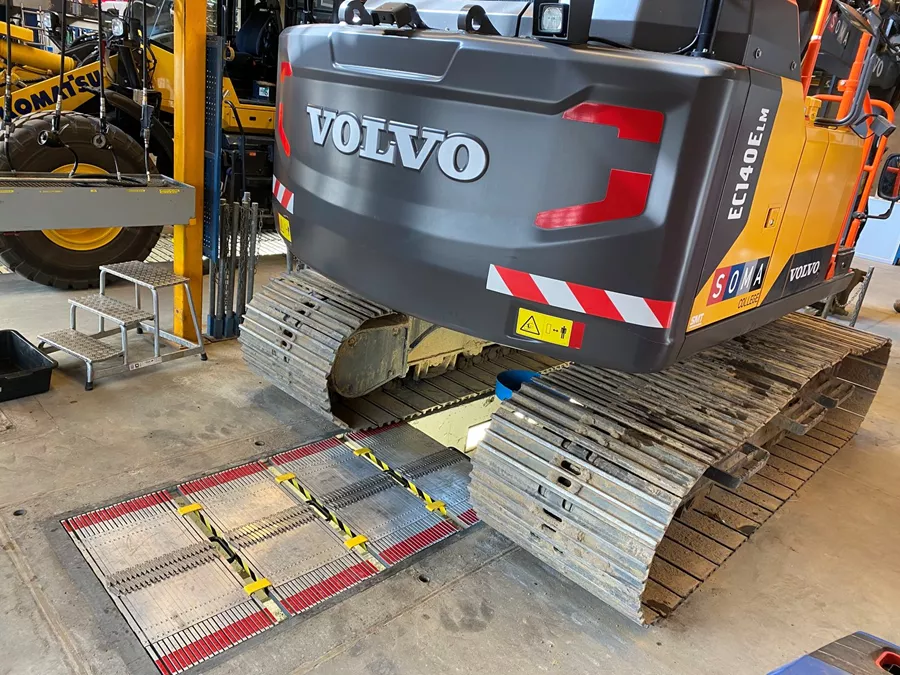
You are visiting the Canada Kee Safety website from United States. Would you like to go to the United States site?

Safety measures for commercial vehicles are wide-ranging and require intense operator training and regular inspections. It seems like ancient history that once there were no seat belts, backup alarms, or fire-resistant cushions. Although vehicular accidents have not been eliminated, they have been reduced in scope and severity due to government attention and continuous improvement within the industry.
What about safety for the vehicle maintenance worker? Trucks, buses, vans, airplanes, railcars, and other vehicles need regular service to operate safely. Workers must access vehicles from above, below, and all around the body. They are at risk of debilitating or fatal injury without the proper fall protection equipment.
Whether the top of a vehicle is flat, like a bus or trailer, or curved, like a jet or tanker, workers need fall protection equipment for maintenance tasks or loading and unloading. An overhead rigid rail system provides fall protection and, in the event of a slip, fall arrest.
Such a system can be mounted from the ceiling in a perpendicular or parallel configuration. It uses a trolley and tie-off for the employee to traverse the length of the overhead track. The worker is stopped with a shorter drop if the person slips and falls, reducing the possibility of injury and damage to the vehicle or equipment.
A rigid rail system is easy to install, maintain, or reconfigure if necessary. It will provide safety compliance with minimal worker training.

The underside of vehicles requires extensive inspection and maintenance. Since it eliminates raising an enormous, multi-ton vehicle on a lift, a below-level pit is the easiest and safest way to access a vehicle from beneath. Yet, an open hole in the floor is an obvious fall risk. Covering the pit with boards or planks is an inefficient and inherently unsafe approach.
A concertina-style inspection pit cover is a safer and more coherent permanent solution. The ideal pit cover will have an adjustable length that is quick and easy to open and close. It is also crucial for individual bars of the width to be adjustable to cover an uneven pit. Aluminum construction will be strong yet lightweight for easy handling and provide corrosion resistance. Locking pins will hold the system in place at different lengths.

For cleaning, maintenance, and repairs, workers need to reach commercial vehicles from all sides at elevated heights. Work platforms offer employees the greatest freedom of movement and compliant fall protection. They are constructed of pipe-fitted safety railings and supports with stable base fittings and anti-slip glass-reinforced nylon or aluminum treads for the steps and platform surface areas. A self-closing safety gate provides added fall protection at the top of the stairs.
Variations of work platforms can be used depending on the vehicle, facility, or tasks performed. A static work platform is ideal for frequent use on a vehicle at the same workstation. Trailer fleets and railway cars are good examples. Since it is modular, a static pipe-fitted work platform can be reconfigured if conditions change.
Mobile work platforms are used where the workspace is otherwise needed and when the vehicle needs access through the work area to park. Instead of base fittings, mobile platforms are equipped with heavy-duty casters to move in and out as needed.
Facilities with hard-to-reach areas, special requirements, or uncommon vehicles—the aviation industry is prime—may need a customized work platform.

While fall protection systems protect vehicle maintenance workers, it is also necessary to protect people, equipment, and products from vehicles that run astray.
Guardrails provide a traffic shield safety barrier throughout a facility.
Upright and corner protectors protect racks from collisions.
Posts and tracks at bay doors and garage openings can be protected with floor or wall-mounted guards.
Just as vehicle safety has come a long way and is a continuous process, protecting the people working on vehicles and the facility from vehicles has made significant strides. Maintenance workers need fall protection systems and equipment for access above, below, and surrounding commercial vehicles. The facility also needs to be protected against vehicular traffic with guardrails and shields for racks and posts.

As workplace safety experts we perform critical analysis inside your facility to identify the hazards where your workers are exposed to the greatest risk. This analysis ensures that the most dangerous areas are protected immediately with proven solutions that meet recognized standards and regulations.